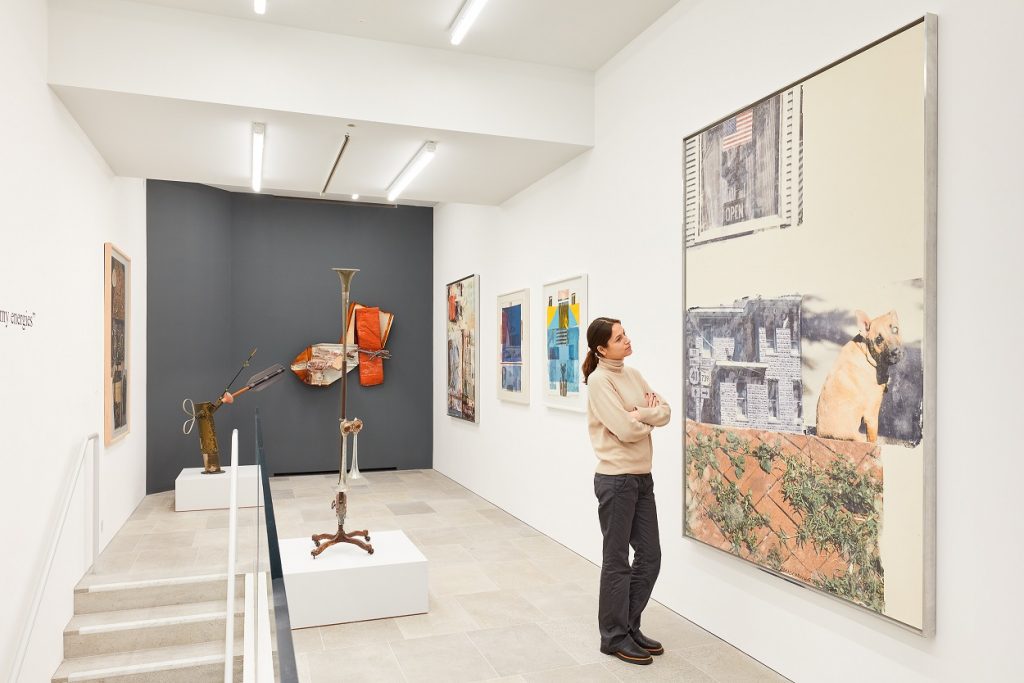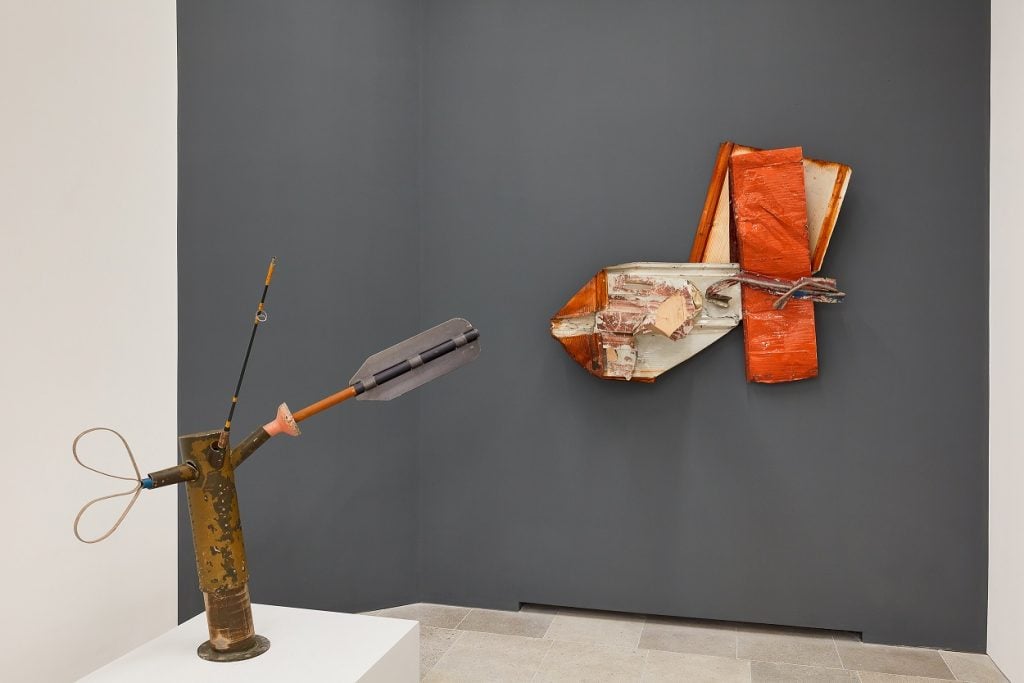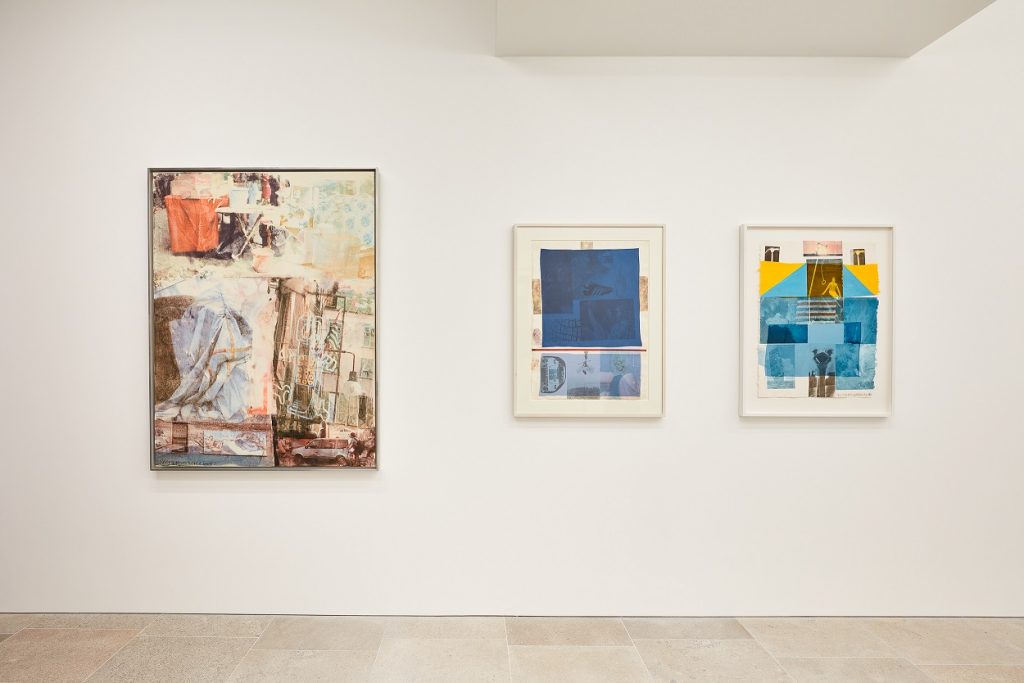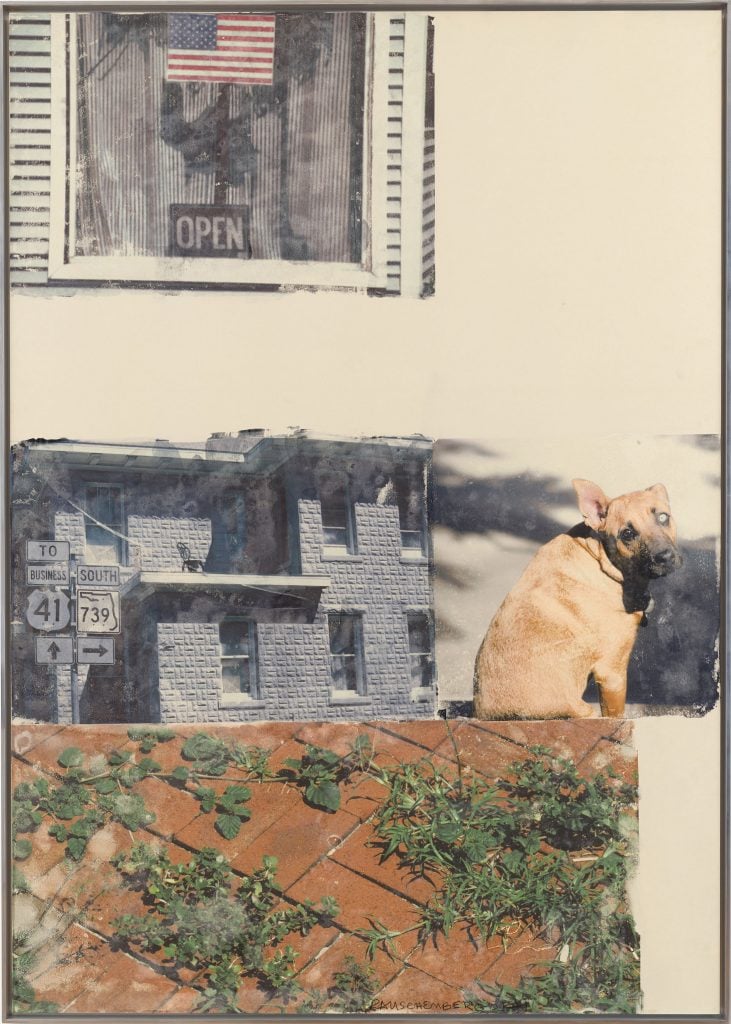A New Exhibition in London Examines How Life on a Secluded Florida Island Inspired Robert Rauschenberg


Artnet Gallery Network

When we picture the life and career of pioneering American artist Robert Rauschenberg, it usually involves the gritty downtown streets of New York City, where he first found fame. But the artist actually spent the majority of his career—some 40 years—living on the sun-drenched Captiva Island, off the coast of Florida.
In the 1960s, in need of a reprieve from the dizzying bustling of city life, Rauschenberg first left New York and ventured to a small fishing village on Florida’s Treasure Island. That restorative and productive trip would forever change Rauschenberg’s life, inspiring him to move permanently to Captiva Island in 1970 where he would remain in residency until his death, in 2008.

Installation view of “Metal, Ink & Dye: Late Works from Captiva Island” 2020. Courtesy of Bastian Gallery.
Now, a small and tightly curated show “Metal, Ink & Dye: Late Works from Captiva Island” at Bastian Gallery in London, is taking a closer look at the sculptures, paintings, and prints Rauschenberg made while on Captiva Island.
The exhibition includes three of the artist’s metal assemblages from his groundbreaking “Gluts” series, dating to the late 1980s and early ‘90s, along with solvent and dye-transfer works from the “Anagram (A Pun)” and “Short Stories” series from the late ‘90s and early 2000s.
The works provide evidence of Rauschenberg’s sense of experimentation, incorporating ink transfers and printing technology, and his use of metal in ever more imaginative and inventive ways. “It was this new island home that proved to be a fertile domain for some of the artist’s most remarkable and challenging works,” the gallery said in a statement.

Installation view “Metal, Ink & Dye: Late Works from Captiva Island” 2020. Courtesy of Bastian Gallery.
The island also afforded Rauschenberg a different perspective on the American social and economic experience. As a first-hand witness to the economic devastation in the southeast caused by a glut in the oil market during the early ’80s, Rauschenberg’s “Gluts” sculptures hint at the relics of the American automotive and industrial eras, along with the contemporaneous obsessions with luxury and extravagance.
“Gas-station signs, automotive scraps, and discarded metal fragments are re-calibrated into standing sculptures and wall-reliefs,” said the gallery.

Robert Rauschenberg, Page 10, Paragraph 3 from the “Short Stories” series. Courtesy of Bastian Gallery.
In accordance with lockdown restrictions in the UK, “Metal, Ink & Dye: Late Works from Captiva Island” can currently be toured virtually, with an accompanying narrated video that guides visitors around the space.
“Metal, Ink & Dye: Late Works from Captiva Island” is on view with Bastian Gallery through Saturday, March 27.Online Viewing Room is available here and the VR tour here